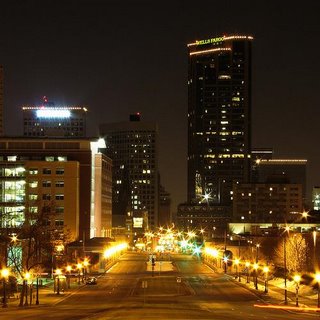Some Initial Thoughts on MN, Seven Years Later...

As noted below, I've just returned to St. Paul from 7 years in Kalamazoo, MI. I've not even been back a week, so I can hardly comment on the current status of the Twin Cities in any sort of comprehensive fashion, but I have a few observations of changes and/or things I hadn't noticed before I moved.
-Construction-wise, St. Paul has really stagnated by comparison to Minneapolis. Since I left in 1999, there are no significant new towers in downtown St. Paul, while there are a number of completed new office and condo towers in Minneapolis, and a whole slew of new condo towers under construction. St. Paul has no current construction, and only one condo tower proposed, plus the (probably never going to happen) Bridges of St. Paul project. More on this later when I can get some photos and links put together.
-Tangentially related, the finally-approved LRT line connecting the two downtowns is long overdue, and is desperately needed. Traffic is awful both ways on 94, worse even than it was a decade ago, so both cities will benefit. But for St. Paul especially, this is a potential economic lifeline; with a massive budget deficit and stagnant growth, this will be huge.
-Everyone here is white. And blonde. Not that Kalamazoo is a bastion of racial diversity, but seriously, I went to the Twins game on Friday, and I was overwhelmed by the homogeneity of our population. Not that I'm not a part of that; your author is himself a pasty white blonde.

4 Comments:
I think the IKEA in Minneapolis highlights the city's growth, an exception among Midwest cities.
I agree, although I think (hope?) the larger trend of Midwestern cities shrinking is starting to turn around; I'll have to try and dig up some good census numbers at some point but I think that places like St. Louis have stopped the bleeding population-wise.
I hope so. As I understand it, the exceptions were Columbus, OH and Indianapolis, IN; most other Midwestern cities exhibited a decline in population, including Chicago.
This article is encouraging, but five years old.
I think these days the forces driving city/suburb population change are the opposite of what they were when white flight really took off in the '50s. Specifically, with the first and second ring suburbs in most places becoming heavily populated and gaining in poor and minority populations, and with many city neighborhoods being gentrified and moving upscale, white flight essentially means either moving way outside of town or moving back into an upscale city neighborhood. So I don't know if increasing city populations is really indicative of healthy cities or of unhealthy suburbs driving a new temporary migration.
Post a Comment
<< Home